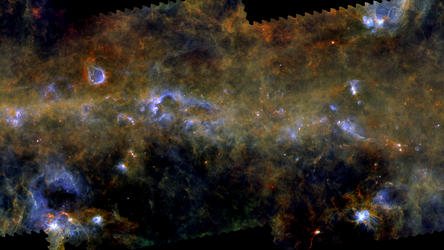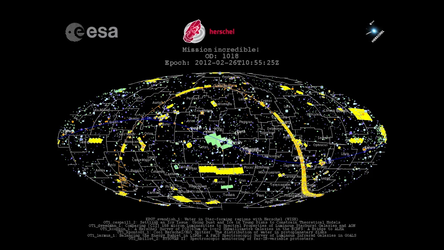Accept all cookies Accept only essential cookies See our Cookie Notice

About ESA
The European Space Agency (ESA) is Europe’s gateway to space. Its mission is to shape the development of Europe’s space capability and ensure that investment in space continues to deliver benefits to the citizens of Europe and the world.
Highlights
ESA - United space in Europe
This is ESA ESA facts Member States & Cooperating States Funding Director General Top management For Member State Delegations European vision European Space Policy ESA & EU Space Councils Responsibility & Sustainability Annual Report Calendar of meetings Corporate newsEstablishments & sites
ESA Headquarters ESA ESTEC ESA ESOC ESA ESRIN ESA EAC ESA ESAC Europe's Spaceport ESA ESEC ESA ECSAT Brussels Office Washington OfficeWorking with ESA
Business with ESA ESA Commercialisation Gateway Law at ESA Careers Cyber resilience at ESA IT at ESA Newsroom Partnerships Merchandising Licence Education Open Space Innovation Platform Integrity and Reporting Administrative Tribunal Health and SafetyMore about ESA
History ESA Historical Archives Exhibitions Publications Art & Culture ESA Merchandise Kids Diversity ESA Brand CentreLatest
Space in Member States
Find out more about space activities in our 23 Member States, and understand how ESA works together with their national agencies, institutions and organisations.
Science & Exploration
Exploring our Solar System and unlocking the secrets of the Universe
Go to topicAstronauts
Missions
Juice Euclid Webb Solar Orbiter BepiColombo Gaia ExoMars Cheops Exoplanet missions More missionsActivities
International Space Station Orion service module Gateway Concordia Caves & Pangaea BenefitsLatest
Space Safety
Protecting life and infrastructure on Earth and in orbit
Go to topicAsteroids
Asteroids and Planetary Defence Asteroid danger explained Flyeye telescope: asteroid detection Hera mission: asteroid deflection Near-Earth Object Coordination CentreSpace junk
About space debris Space debris by the numbers Space Environment Report In space refuelling, refurbishing and removingSafety from space
Clean Space ecodesign Zero Debris Technologies Space for Earth Supporting Sustainable DevelopmentLatest
Applications
Using space to benefit citizens and meet future challenges on Earth
Go to topicObserving the Earth
Observing the Earth Future EO Copernicus Meteorology Space for our climate Satellite missionsCommercialisation
ESA Commercialisation Gateway Open Space Innovation Platform Business Incubation ESA Space SolutionsLatest
Enabling & Support
Making space accessible and developing the technologies for the future
Go to topicBuilding missions
Space Engineering and Technology Test centre Laboratories Concurrent Design Facility Preparing for the future Shaping the Future Discovery and Preparation Advanced Concepts TeamSpace transportation
Space Transportation Ariane Vega Space Rider Future space transportation Boost! Europe's Spaceport Launches from Europe's Spaceport from 2012Latest

Every point is a galaxy
Thank you for liking
You have already liked this page, you can only like it once!
At first glance this frame is flooded with salt-and-pepper static – but don’t adjust your set!
Rather than being tiny grains or pixels of TV noise, every single point of light in this image is actually a distant galaxy as observed by ESA’s Herschel Space Observatory. Each of these minute marks represents the ‘heat’ emanating from dust grains lying between the stars of each galaxy. This radiation has taken many billions of years to reach us, and in most cases was emitted well before the Solar System and the Earth had even formed.
This frame shows a map of the North Galactic Pole as imaged by Herschel’s Spectral and Photometric Imaging Receiver, SPIRE. As on Earth, astronomers define locations on a cosmic scale using a coordinate system. For the Milky Way galaxy, this coordinate system is spherical with the Sun at its centre, and provides values for longitude and latitude on the sky with respect to our Galaxy.
The North Galactic Pole lies far from the cluttered disc of the Milky Way, and offers a clean, clear view of the distant Universe beyond our home galaxy. In the sky, it is located somewhere in the northern constellation of Coma Berenices (Berenice’s Hair), a region that also contains an especially rich galaxy cluster known as the Coma Cluster. Serendipitously, the Coma Cluster is included in this map, adding over 1000 points of light to the tally of individual galaxies.
Herschel was active from 2009 to 2013, and used its instruments to study the sky in the far infrared. SPIRE was particularly well-suited to mapping large areas of sky, and observed the North Galactic Pole in three different filters simultaneously – such observations can be used to produce multicoloured images.
The image shown is a single-filter map obtained at a wavelength of 250 μm as part of the Herschel Astrophysical Terahertz Large Area Survey (H-ATLAS), and covers some 180.1 square degrees of sky. This used both SPIRE and another Herschel instrument, the Photodetector Array Camera and Spectrometer (PACS), to survey some 660 square degrees of sky in five wavelength bands and produce the largest far infrared surveys ever made of the sky lying outside our galaxy.
The North Galactic Pole imaged by PACS
-
CREDIT
ESA/Herschel/SPIRE; M. W. L. Smith et al 2017 -
LICENCE
ESA Standard Licence

North Galactic Pole

Herschel’s view of the Galactic Centre

SPIRE images of M66 and M74

Herschel's view of the Galactic Plane















 Germany
Germany
 Austria
Austria
 Belgium
Belgium
 Denmark
Denmark
 Spain
Spain
 Estonia
Estonia
 Finland
Finland
 France
France
 Greece
Greece
 Hungary
Hungary
 Ireland
Ireland
 Italy
Italy
 Luxembourg
Luxembourg
 Norway
Norway
 The Netherlands
The Netherlands
 Poland
Poland
 Portugal
Portugal
 Czechia
Czechia
 Romania
Romania
 United Kingdom
United Kingdom
 Slovenia
Slovenia
 Sweden
Sweden
 Switzerland
Switzerland
























